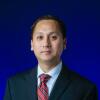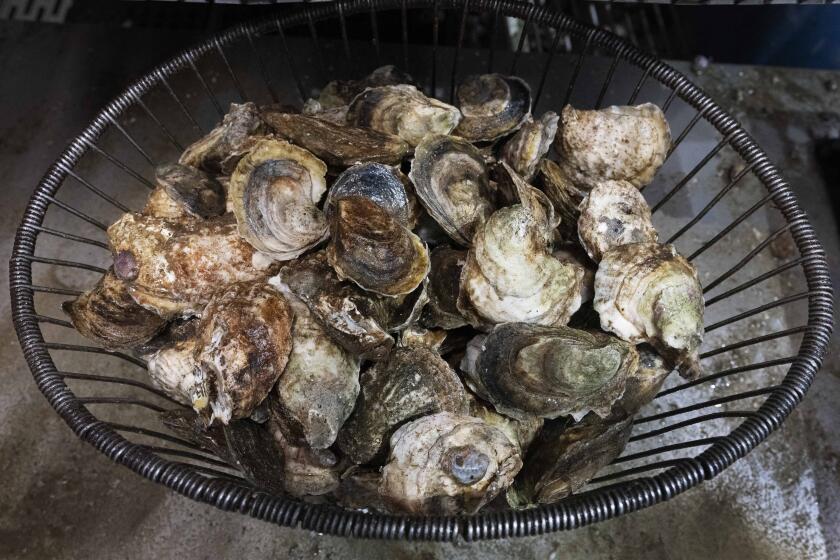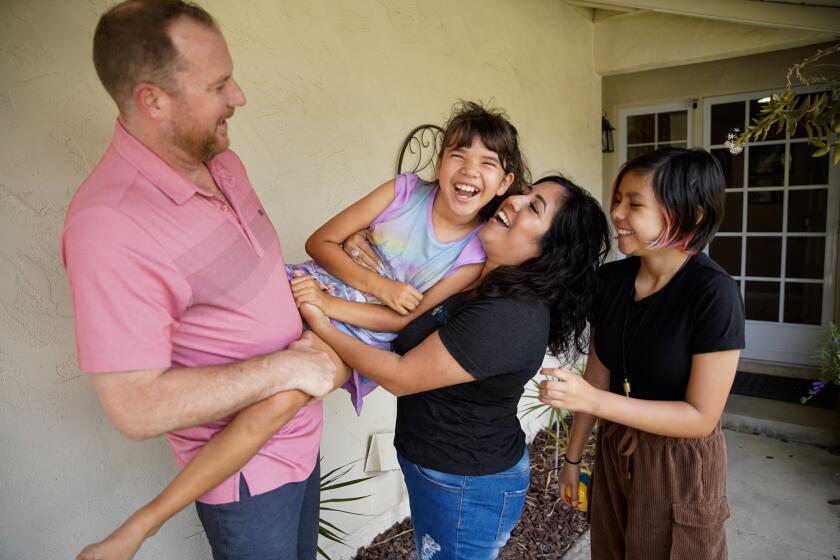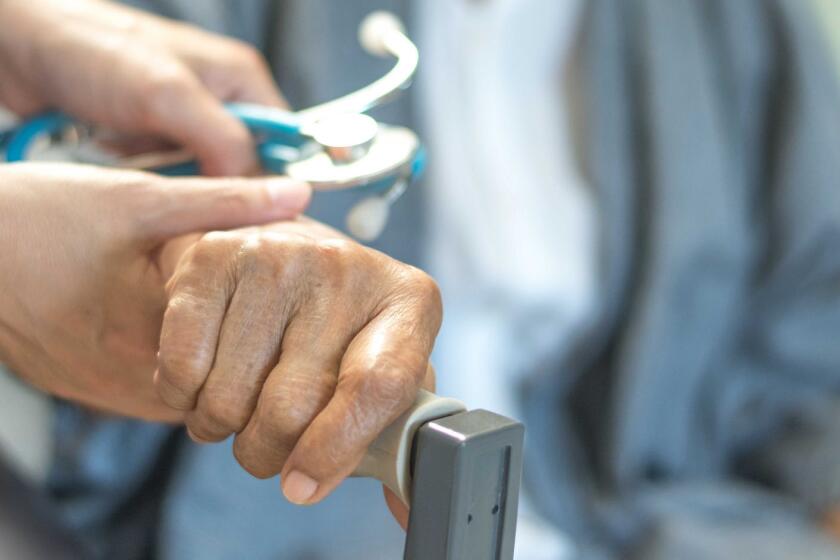Finding life’s meaning in charitable medicine
You can hear it in their voices.
As a nurse excitedly describes her first charitable mission, the words spill out faster and louder.
When a surgeon reflects on the lasting friendships formed with overseas children helped by him for no charge, the giggles, repeated pauses and quavering phrases convey his affection for them.
And in the moment that another surgeon summarizes why she co-founded a group that provides free medical care in six countries, her inflections punctuate her conclusion: “Good health is such a privilege. I feel fortunate and compelled to do my part in making that privilege available to more people.”
During this season of thanksgiving, those and other practitioners of medicine across San Diego County are grateful for their opportunities to bring healing to those in need.
Some contribute their talents to nonprofit organizations dedicated to providing health care in impoverished or remote areas of the world, while some focus on underserved communities in their home region.
The charitable medicine takes many forms.
A large number of the projects offer high-quality surgeries, but there are also plenty of clinics administering free or discounted preventive services. Dentists, physical therapists, radiologists, pharmacists, phlebotomists and others are part of the broad mix of volunteers. Still others embark on attention-raising adventures — from shaving their heads to running marathons to climbing mountains — to raise money so a string of villages in Africa can buy an ambulance or a town in Peru can build an operating room.
Below, we present the stories of six medical professionals in San Diego County who have enriched the lives of others through their charitable care — and have felt enriched in return.
DR. SANDRA LYNN FREIWALD
As a little girl, Sandra Lynn Freiwald wanted to become a veterinarian. Fine plan — until she discovered that she’s allergic to most animals.
Then she gravitated toward medicine for human beings. Her excitement about the life-saving nature of operations channeled her into a career as a general surgeon, where handling everything from skin lesions to trauma-level cases is standard procedure.
The job also introduced her to what has become a sustained passion: medical charity.
“Attending a trauma surgery conference as a (post-medical school) resident, I heard a speaker talking about working in Afghanistan with (the nonprofit group) Doctors Without Borders. The pictures of riding into mountains on donkeys and doing surgeries in tents fascinated me,” she said.
“I was drawn to the challenge of practicing medicine in under-resourced communities,” she added.
She later moved to San Diego for a fellowship in trauma and critical-care medicine, then began working for Kaiser Permanente.
While continuing to volunteer for Doctors Without Borders — with trips to Liberia — she also joined a charitable effort close to home.
She became lead surgeon for Project Access, the flagship program of the San Diego County Medical Society Foundation. Kaiser contributes by providing the medical staff and facilities to perform a range of free outpatient surgical procedures for low-income or uninsured residents.
“Most of our clients are in their 20s to 60s … and come from across the geographic, racial and cultural spectrums. Most of them are working-class individuals trying to support themselves and their families,” Freiwald said. “It’s just gratifying to restore hard-working people to normalcy, to see them regaining the ability to do meaningful things in their daily lives.”
The most common surgeries are to remove gallbladders and repair hernias. Project Access also handles vascular and urology procedures, performs colonoscopies, does cataract surgeries, looks at prostate problems and provides certain orthopedic surgeries.
Kaiser and the foundation have held 16 surgery days since 2008, aiding 571 San Diegans at an estimated financial value of $3 million.
Freiwald, 46, said she remains invigorated by Project Access and is elated that many other doctors have joined the program. She hopes the initiative will grow so more residents can be assisted.
“It comes down to believing that everyone has the right to full access to quality health care,” she said.
Freiwald also envisions a day when she can be less restricted to her home in Cardiff by the Sea and resume her overseas missions. Once her 6-year-old daughter is old enough, she would like to take her on these trips to instill the ethic of giving back.
In the meantime, Freiwald continues to champion Doctors Without Borders’ cause through efforts like running the New York City marathon last year as a fundraiser.
But she said people shouldn’t feel compelled to donate only to charitable medical undertakings.
“I think people have many ways to express their gratitude by helping others,” Freiwald said. “I’m lucky to have found my calling.”
DR. WILLIAM WANG
Sixteen years of conducting free checkups, doing surgeries and teaching students in China, Tibet and Mongolia.
For Dr. William Wang of San Diego, it’s a matter of the heart.
Wang, 55, is a cardiothoracic surgeon at Scripps Memorial Hospital in La Jolla. He leads the Scripps Saving Hearts program, whose team travels mostly to China three or four times per year.
The members target remote areas with substandard or nonexistent cardiovascular care. They perform 70 to 80 heart surgeries each year, plus about the same number of angioplasties and stent procedures. They also hold classes and conferences for 200 to 500 students annually.
Their next trip is scheduled for mid-December.
Wang said the team not only forgoes all payments for its services, but also makes sure no one at any of the host sites charges fees or takes bribes.
“Our reputation and integrity are extremely important,” he said. “I also want patients and our colleagues in China to know that we’re honest, low-maintenance people. We sit in economy class on the plane, and we sleep in whatever housing is made available to us in a village or town.”
This setup, this longtime devotion to the heart program, could very well have never happened.
Wang grew up with a relative who suffered from a congenital heart defect that caused her to turn blue and collapse after taking a few steps. He thought it was “the most amazing thing on earth” when the young girl underwent surgery, recovered and no longer had the poor blood circulation.
Still, he didn’t aspire to become a heart surgeon.
“I hated, just hated the cardiology hospital rotation during medical school,” Wang said. “You had to stand at the operating table for hours and hours. I counted so many medical tubes used on the patient during each surgery — it was overwhelming!”
Over time, though, he became captivated with the technical sophistication of heart surgeries, from fixing faulty valves to repairing congenital defects. He also reveled in the challenge of mastering complex surgeries, and he increasingly recognized how central the heart is to the human body.
After finishing medical school in 1986, Wang got the chance for further training in Arizona. Then his career took him to the Northwest and San Francisco before he settled in San Diego.
As he gazes back in time and looks toward the future, Wang said:
“My plan is to continue the Scripps program and make it even bigger. ... Being a heart surgeon here allows me to help patients in honor of the American mentors I’ve had, and doing charity care in China allows me to help my fellow Chinese people in honor of the teachers who motivated me from the beginning.
“Both ways, I’m trying to repay a debt and show my gratefulness.”
DR. AMANDA GOSMAN
“Busy” might be an insufficient word to describe Dr. Amanda Gosman.
During a standard work day — at least standard for a surgeon — the 43-year-old shuttles between La Jolla and Serra Mesa. She’s director of craniofacial and pediatric plastic surgery at UC San Diego, and she’s chief of plastic surgery at the affiliated Rady Children’s Hospital.
In the wee hours of morning (Gosman awakens at 4 a.m.), late at night and on weekends at her home in Leucadia, she serves as president and medical director of the nonprofit organization ConnectMed.
The San Diego-based group, which she co-founded in 2010, provides free multidisciplinary health care through its partners in Ecuador, Guatemala, India, Malawi, Mexico and Vietnam. It concentrates on assisting people in remote regions who have suffered from burns, other traumatic physical injuries and acquired or congenital defects like cleft palate.
“Multidisciplinary means we owe every ConnectMed patient the same gold standard of care that most people get in the United States,” Gosman said. “There has to be proper care before and after a surgery, and that sometimes can include a long and complicated recovery period. Not only that, but the care has to come from a comprehensive group of doctors, nurses, rehabilitation specialists, speech therapists, audiologists and more. It’s a team approach.”
Without this standard, she said, patients can often end up in a worse state than before their surgery.
To cultivate a widening base of knowledge at the collaborating sites, ConnectMed’s volunteers couple their overseas surgeries with on-site teaching. Gosman and her colleagues hold conferences and rely on email, the Internet and other means to offer year-round education.
The organization runs the Visiting Scholar Program, which pays for select doctors to conduct research and gain hands-on training in San Diego. The idea is that each scholar will return to his or her home community to help establish a more robust set of medical services there. This year’s participant is Dr. Wone Banda from Malawi.
Gosman acknowledged that her schedule can be hectic, but adding ConnectMed to her list of tasks didn’t faze her. That’s partly because she had made many contacts from around the world through her earlier charitable missions, contacts who now support the ConnectMed vision.
She had joined a program that sets up clinics in remote parts of Guatemala, mostly plantations where migrant laborers harvested coffee and sugar cane.
“It was pretty shocking,” Gosman recalled. “The workers had decrepit housing and few if any sanitation systems. They suffered from machete wounds, rashes, malnutrition, diseases caused by lack of clean water.”
Instead of feeling overwhelmed, Gosman felt invigorated by how much doctors could do with few resources.
She embarked on another mission, this one to Ecuador. She saw the effectiveness of telemedicine, with specialists at a medical school using low-bandwidth video to consult with her and other members of a mobile surgical unit — an operating room built on the back of a delivery truck.
While all of these experiences have shaped Gosman’s worldview, the one that has defined her ethical purpose more than any other happened during high school.
As a foreign-exchange student in Egypt, she saw pervasive economic, gender and medical disparities. “Ever since that time, I’ve looked for ways to lessen those disparities in the world.”
The ideal sustains her during less-than-desired tasks such as fundraising for ConnectMed, including the group’s annual benefit gala on Dec. 4.
“It’s hard to describe what charitable work means to me. It just comes from my heart,” Gosman said. “It gives me meaning in life, and that’s something I’ll never stop being thankful for.”
DR. HARISH HOSALKAR
Dr. Harish Hosalkar doesn’t like to use the phrase “charitable medicine.”
Maybe it’s because he views the free surgeries he provides in India as a privilege — not a grand gesture or an obligation — to help resilient patients who lack money, access to quality medical care or both.
Possibly it’s because he sees his fellowship program, which gives complimentary training to young doctors from various countries, as reciprocity for the instruction and mentoring he received from his own teachers.
Perhaps it’s because his work fulfills a dream, a goal, a love he’s had since age 7, when he first wanted to become an orthopedic surgeon.
“Call it God or fate or destiny. I’m fortunate to have skills that help change a person’s life by making them functional again,” said Hosalkar, who runs an orthopedic practice and performs most his operations at Paradise Valley Hospital in National City, Scripps Mercy Hospital in Hillcrest and Tri-City Medical Center in Oceanside.
His dream resulted from a strategy of fusing two key influences: that of his father, a civil engineer, and that of his physician aunts and uncles.
“My mind became interested in putting things together like an engineer would, but my heart was in medicine, which has its potential of making things whole again. I decided that orthopedics would be the right combination of those things,” he recalled.
He completed his medical school education in India at age 20, obtained his medical degree at 22 and became an orthopedic surgeon at 26.
From the outset of his medical education, he felt compelled to use his expanding knowledge to aid people in India’s villages and slums. He volunteered at camps for children with polio and cerebral palsy. He went door to door in various neighborhoods to offer free education on family planning. He stepped up to vaccinate families for the plague, again at no charge, during an outbreak.
Eventually, Hosalkar made his way to London and the United States to further hone his professional experience. Now he lives in Scripps Ranch with his wife and two children.
At 43, he feels fortunate to give back in two main ways: as a surgeon and as a mentor.
Hosalkar travels to India twice a year, for 10 to 14 days each time, so he can perform orthopedic surgeries at no cost to patients chosen by his charitable partners. He typically does procedures to preserve ailing joints, reconstruct limbs, address issues related to cerebral palsy and lengthen limbs for people with lopsided arms or legs.
During these trips, he holds lectures and workshops for medical students and less experienced physicians.
Back in San Diego, he enjoys teaching the young surgeons in his ongoing fellowship program. If a trainee lacks housing, he’s been known to let that person live in his home for months.
Hosalkar also uses Skype, FaceTime and email to extend charitable services to his affiliates in India, from reading radiologic images to consulting on complex cases.
In about a decade, once his children have enrolled in college, Hosalkar intends to limit his practice to three days per week so he can increase his charitable activities.
“I’m thankful for the medical skills that I possess, and I look forward to rehabilitating more people so they can regain full-functioning lives again,” he said. “What I’ve been able to do is just a start.”
MITZI ALBANO
The chance to meet people who are joyful despite their meager material means.
The ability to have much more hands-on clinical practice than what’s available in a U.S. academic setting.
The gift of forming yearslong friendships with your patients.
Sharp Chula Vista Medical Center emergency department nurse Mitzi Albano lists these reasons, and many more, for why she has contributed her nursing skills to charitable missions in four countries.
Then, a bit deeper into her interview, the 28-year-old from Kearny Mesa shared the root reason for her volunteerism:
“My father passed away from a cerebral hemorrhage when I was 15,” she said. “He had a lot of medical factors, but he didn’t really take care of himself because he lacked the health education to know the importance of preventive care.
“Since then, I’ve wanted to educate and empower others so they can become interested in their own health and take care of themselves better,” she added. “Then they can live longer — to be there for their families.”
Albano’s medical journey led her to nursing, which she finds to be the perfect fit because it’s not only about medical expertise, but also compassion, caregiving and close interaction with patients. She’s convinced that such qualities are appreciated anywhere in the world.
She has some firsthand evidence to back up that belief.
During missions to Panama, Peru and Ghana, she discovered conditions far different than her San Diego surroundings: lack of paved roads and beds, huge bugs buzzing about, people collecting water for days so they would have enough to take a bath.
She also witnessed similarities: children still smiling regardless of their infections or deformities, parents eager to learn how to keep their households healthy, residents able to connect with their foreign visitors through the universal language of hugs and smiles.
One example stands out for Albano.
“It took us about 20 hours to reach Ghana, so everybody was tired and a bit grumpy. And it was scorching hot, so some people in our medical group weren’t feeling great. But when we arrived at our destination, we were energized because the villagers put on a whole celebration to welcome us. They choreographed dances while the kids ran over and held our hands. It was so alive,” she said.
Albano’s biggest volunteer commitment involves The Flying Samaritans, a network of health students and medical professionals who run free clinics in Mexico. The organization, which got its name from the fact that its volunteers used to take flights from the United States into designated locations in Mexico, includes chapters based at UC San Diego and San Diego State University.
Many of the volunteers still reach Mexico via airplane, but the SDSU team drives down to its clinic in the Ejido Matamoros area of Tijuana, about 15 minutes south of the Otay Mesa border crossing.
Albano is part of the San Diego State chapter’s founding board. She has tracked the team’s growth from a small contingent of mostly premed students at the university to a full-fledged combination of students and working professionals, from doctors, nurses and dentists to pharmacists, physical therapists and paramedics.
One aspect that has remained constant: The volunteers show up at the clinic every second Saturday of the month, rain or shine.
They don’t require any financial screenings. They do track their patients’ progress from month to month, year to year.
In the four years since the chapter’s establishment, Albano said she has found her career’s meaning time and time again in helping at the clinic.
“It has shaped who I am today, not only as a nurse but also a human being. I see people’s kindness, their loving spirit. It shows me what characteristics are most important in life,” she said.
“I’ve learned what happiness really is from doing this charitable work.”
DR. RITVIK MEHTA
“I never want to forget where I came from.”
Where Dr. Ritvik Mehta came from is Kenya, the landscape for most of his childhood.
He has fond memories of the country, including the friendships forged there. He also remembers seeing, from as soon as he could form memories, examples of widespread poverty and hunger.
Each year from elementary school until the start of high school, he participated in a walk against hunger. The campaign involved raising money from family members and other sponsors for charity. Then on event day, he would cover more than 15.5 miles.
“Early on, I learned the significance of giving back,” Mehta said. “That has been a big motivation for me all of these years.”
When he reached 10th grade, his family moved to Los Angeles to reunite with relatives and allow him to pursue broader educational options. Mehta recognized his strengths in science and connecting with other people, and those interests guided him to medicine.
The career choice enabled him to follow the giving-back creed.
During his post-medical school residency in Boston, Mehta went on his first charitable health trip. Helping the impoverished in Ecuador through the nonprofit organization Medical Missions for Children resonated with him deeply.
“It was an incredible reminder of my years in Kenya. I felt right at home, and I knew I would press on with using my skills to bring physical and emotional healing,” he said.
Mehta has gone on at least one overseas medical mission every year since that inaugural journey in 2005. That includes visiting Guatemala for the past eight years.
At his Scripps Health-affiliated practice in Carlsbad and La Jolla as well as during his international surgical trips, Mehta focuses on his specialty of otolaryngology — dealing with diseases of the ear, nose, sinus, mouth, throat and voice, along with structural problems of the face and neck.
A mission lasts eight to 14 days for a team that comprises surgeons, anesthesiologists, nurses and other support staff from numerous countries. They raise funds and pay out of pocket for all expenses, including the medical equipment.
After doing final screenings on preselected patients, Mehta performs surgeries from 7 a.m. to 6 p.m. each day. The trip ends with the Medical Missions for Children team discussing post-operative care with its local partners.
“It’s a jam-packed schedule, but there’s none of the red tape that we have in the U.S. It’s so refreshing to not have the bureaucracy,” Mehta said. “I also find it rewarding to exchange ideas with colleagues from around the world.”
In Guatemala, his subspecialty has been doing surgeries for children with microtia, a congenital deformity in which the outer ear is missing or under-developed. He said high-altitude countries in Latin America have a higher incidence of this condition.
Forming an outer ear is a process that takes multiple surgeries over years. Mehta has gotten to know his young patients and their parents well. He said they remember to ask about his two daughters each year, and they bring handmade toys, paintings, food and other small gifts for him and his family in Solana Beach.
“The main thing I learn from these families is how they’re so thankful for what they have. They’re always smiling,” he said. “I don’t know how they live with so little, yet are some of the most content people I’ve met. We need to learn from them about what matters most in life.”
At 39 and well-established in his career, Mehta has a simple wish: to keep advancing research in his field and to keep giving back.
“I’m just really humbled for the opportunities to help children have a brighter future.”
Get Essential San Diego, weekday mornings
Get top headlines from the Union-Tribune in your inbox weekday mornings, including top news, local, sports, business, entertainment and opinion.
You may occasionally receive promotional content from the San Diego Union-Tribune.







